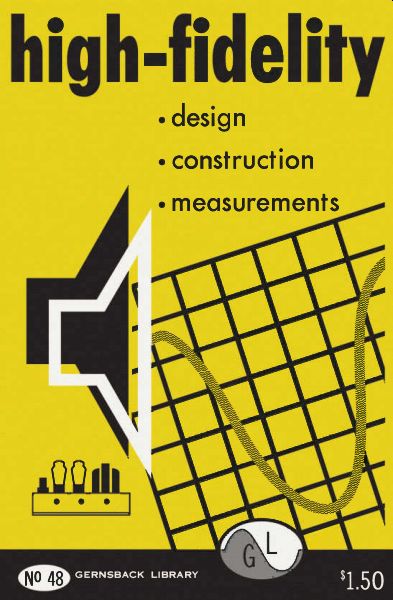Pre-stereo (Monophonic) High-Fidelity Audio: Design, Measurements and Construction
Design
4. Loudspeaker Network Inductors
5. Multiple Speaker Installation
6. Voltage Regulators for Hi-Fi Amplifiers
Measurements
7. Speaker Impedance Measurements
8. Amplifier Impedance Measurements
9. Measurements with the V.T.V.M.
10. Intermodulation Distortion Tests
Construction
12. Practical Williamson Amplifier
14. Miniature-Tube A. F. Amplifier
Introduction
AUDIOPHILES are a unique group. They are thoroughly saturated with the tantalizing idea that sound, a complex arrangement of fantastic waveforms, can be stuffed into complex electro-mechanical apparatus and emerge amplified, but so unchanged, that the listener is deluded into thinking it is the unmolested original. To achieve this, they surround themselves with equalizers, crossover networks, amplifiers of assorted sizes, tried and trusted circuits (with and without variations), pursuing their goal with amazing decisiveness of purpose.
Realistic results have been secured. A listening test between audio equipment used but a decade ago and modern audio systems would impress itself even on the untrained ear. Unfortunately, audio quality seems to have increased cost as a running mate, and many of those who want and would appreciate fine audio equipment must let their purse and not their own technical qualifications act as the limiting factor.
Also, there are many audio men who prefer to construct, design, and experiment with their own audio systems, rather than work within the confines of a commercially available set-up.
If you belong to these groups, then this guide was written for you.
Information-packed almost to the point of embarrassment, you can mull and dally a pleasant path through audio design, audio measurements, or audio construction. Be warned, however, that some of this very practical and useful information will cling to you and unless you are wary, will inevitably result in better amplifiers, better speaker arrangements, less hum, improved frequency response -in short, in more faithful, realistic and enjoyable reproduction of both speech and music.
This might have the effect of starting you off in search of the perfect amplifier (if you are not already so started) and can only result in your having many happy hours in continuing the design and development.
Originally appearing in RADIO-ELECTRONICS Magazine (early 1950s), the material contained in this guide represents the actual experience of many men to whom audio is either a daily business or hobby. The names of these contributors appear in the Contents (above). We gratefully acknowledge the fact that their significant contributions to the field of audio have made this guide possible.
This guide is based on the short 1953 book below...

Also see: Guide to Vacuum Tube Amplifier Circuits